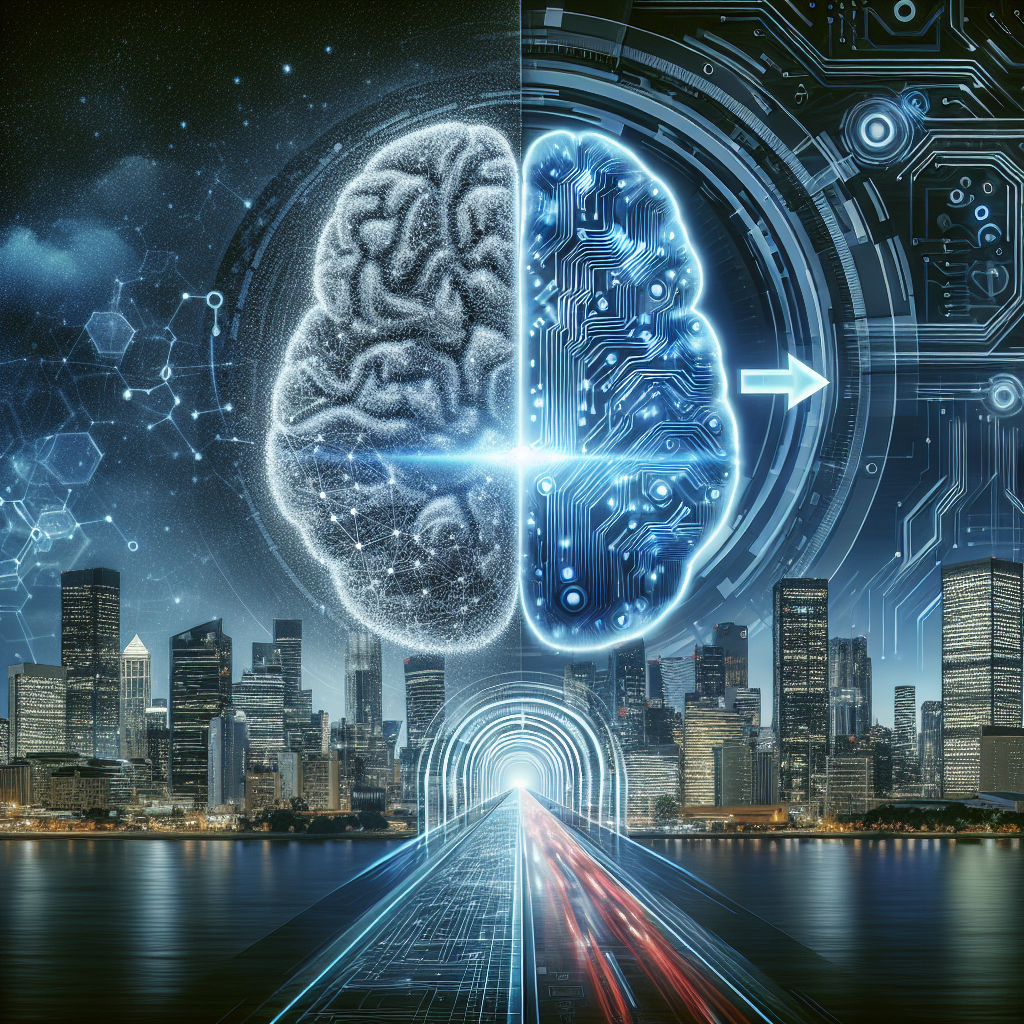From Sci-Fi to Reality: How AGI is Reshaping the World as We Know It
Artificial General Intelligence (AGI) has long been a staple of science fiction, portrayed as sentient robots and superintelligent computers that surpass human capabilities. However, in recent years, AGI has transitioned from the realm of fantasy to a tangible reality, with researchers and companies making significant strides towards creating machines that can think and learn like humans. This shift has profound implications for society, as AGI has the potential to revolutionize industries, reshape economies, and fundamentally alter the way we live and work.
In this article, we will explore the current state of AGI research and development, the potential impact of AGI on various sectors, and the ethical considerations that come with the rise of superintelligent machines. We will also address common questions and concerns about AGI, providing a comprehensive overview of this transformative technology.
The Rise of AGI
Artificial Intelligence (AI) has made significant advancements in recent years, with machine learning algorithms powering a wide range of applications, from voice assistants to autonomous vehicles. However, these AI systems are limited to specific tasks and lack the ability to generalize their knowledge to new situations—a key characteristic of human intelligence. AGI, on the other hand, aims to create machines that can perform any intellectual task that a human can, from solving complex problems to understanding natural language.
Achieving AGI is a monumental challenge, as it requires developing algorithms that can learn from experience, reason about the world, and adapt to new environments. Researchers are pursuing a variety of approaches to AGI, from neural networks inspired by the human brain to symbolic reasoning systems that manipulate abstract concepts. While progress has been made in individual AI capabilities, such as image recognition and language translation, integrating these capabilities into a unified AGI system remains a formidable task.
Despite the challenges, there have been significant breakthroughs in AGI research in recent years. Deep learning, a branch of machine learning that uses neural networks to model complex patterns in data, has shown remarkable success in tasks such as image and speech recognition. Reinforcement learning, a form of machine learning that uses feedback from the environment to improve performance, has enabled AI systems to master games like chess and Go. These advances have brought AGI closer to reality, sparking renewed interest and investment in the field.
The Impact of AGI
The potential impact of AGI on society is immense, with far-reaching implications for nearly every aspect of our lives. In the workplace, AGI has the potential to automate a wide range of tasks, from routine administrative work to complex decision-making. This could lead to increased productivity, lower costs, and new opportunities for innovation. However, it also raises concerns about job displacement and income inequality, as machines take over tasks traditionally performed by humans.
In the field of healthcare, AGI has the potential to revolutionize diagnosis and treatment, enabling faster and more accurate medical decisions. AI systems can analyze vast amounts of patient data to identify patterns and predict outcomes, leading to personalized treatment plans and improved patient outcomes. Similarly, in the field of transportation, AGI-powered autonomous vehicles could reduce accidents, improve traffic flow, and revolutionize the way we travel.
AGI also has the potential to transform education, with personalized learning systems that adapt to students’ individual needs and abilities. These systems can provide targeted feedback, track progress, and tailor instruction to optimize learning outcomes. In the field of entertainment, AGI-powered virtual assistants and chatbots can enhance the user experience, providing personalized recommendations and assistance.
Ethical Considerations
As AGI becomes more prevalent in society, it raises important ethical considerations that must be addressed. One key issue is the potential for bias in AI systems, which can perpetuate existing inequalities and discrimination. For example, AI algorithms trained on biased data may produce biased results, leading to unfair treatment of certain groups. Ensuring that AI systems are fair and unbiased requires careful data collection, algorithm design, and oversight.
Another ethical concern is the impact of AGI on privacy and security. AI systems that collect and analyze vast amounts of data raise concerns about surveillance, data breaches, and unauthorized access. Protecting user data and ensuring the security of AI systems are critical to maintaining trust and confidence in these technologies. Additionally, AGI raises questions about the rights and responsibilities of intelligent machines, including issues of accountability and liability.
FAQs
Q: What is the difference between AGI and narrow AI?
A: AGI refers to machines that can perform any intellectual task that a human can, while narrow AI is limited to specific tasks or domains. AGI aims to replicate human-level intelligence, while narrow AI focuses on solving particular problems.
Q: Will AGI surpass human intelligence?
A: The ultimate goal of AGI is to create machines that can think and learn like humans, but whether AGI will surpass human intelligence remains uncertain. AGI may have different strengths and weaknesses compared to human intelligence.
Q: What are the potential risks of AGI?
A: AGI raises concerns about job displacement, bias in AI systems, privacy and security issues, and ethical considerations about the rights and responsibilities of intelligent machines. Addressing these risks requires careful research, regulation, and oversight.
Q: How can we ensure that AGI is developed ethically?
A: Ensuring ethical development of AGI requires transparency, accountability, and collaboration among researchers, industry, and policymakers. Establishing guidelines, standards, and regulations for AI development can help mitigate risks and promote responsible use of these technologies.
In conclusion, AGI has the potential to reshape the world as we know it, revolutionizing industries, transforming economies, and challenging our understanding of intelligence. While the road to AGI is fraught with challenges and uncertainties, the promise of creating machines that can think and learn like humans is a powerful motivator for researchers and innovators. By addressing ethical considerations, embracing collaboration, and fostering responsible development of AGI, we can harness the full potential of this transformative technology for the benefit of society.

